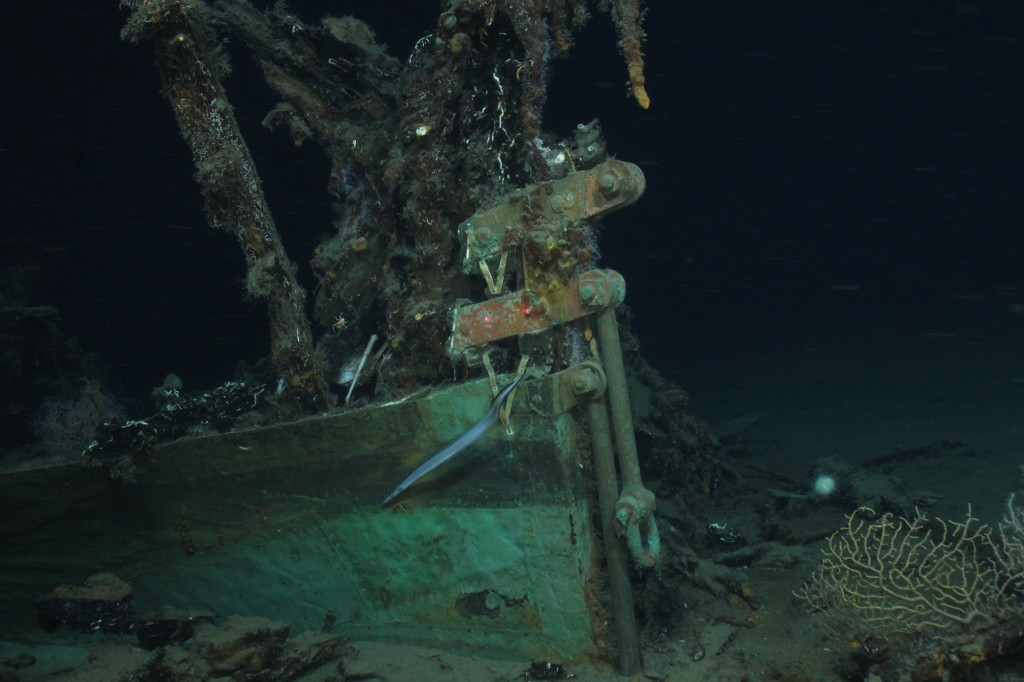
The bow of the Green Lantern Wreck showing the copper sheathing, draft marks, and bobstay fasteners. Image courtesy of Rob Church using Aquapix camera, Lophelia II 2009: Deepwater Coral Expedition: Reefs, Rigs and Wrecks.
The Green Lantern Wreck was first recorded in 1996 during a deep-tow survey for BP Exploration Inc’s proposed pipeline route in the Green Canyon leasing area. A 2004 C&C Technologies AUV survey for GulfTerra Energy Partners, L.P. followed by an ROV investigation of the site later that year confirmed that the sonar target was a shipwreck. During the ROV investigation, a green lantern with the Spanish word “ESTRIBOR” (“starboard”) stamped on the front was observed. Since then, the site has been referred to as the “Green Lantern Wreck.” The vessel is a wooden-hulled sailing ship with copper sheathing measuring around 70 ft. (21 m) in length by 23 ft. (7 m) in beam. Artifacts observed on the site included rigging, a glass bottle, and a ceramic plate. During a 2007 ROV investigation, a bell, a second lantern, and additional rigging elements were observed. Wooden frames could be seen within the remains of the hull. Based on the extant hull remains, presence of copper sheathing, and artifact assemblage, the wreck was interpreted to date to the 19th century.
In 2009, as part of the Lophelia II study “Exploration and Research of Northern Gulf of Mexico Deepwater Natural and Artificial Hard-Bottom Habitats with Emphasis on Coral Communities: Reefs, Rigs, and Wrecks”, a team of scientists returned to the site to collect a few diagnostic artifacts and record the site in greater detail. Over the course of 20 hours, the team mapped the site; collected diagnostic artifacts, sediment cores, rusticles, video and still photographs; observed biological communities on the wreck; and deployed microbiological experiments.
The wooden hull itself is relatively well preserved within the shell of the copper sheathing. At the bow, draft marks can be seen on the starboard side of the stem. The windlass was also observed off the port side of the bow on the seafloor. Artifacts recovered by the team in 2009 included the bell, the starboard lantern, a metal fork, a ceramic dish, and a wooden sheave. The fork was engraved on the back with “SIM… GEORGE H. ROGERS” indicating the Simeon L. & George H. Rogers Co., which began manufacturing this type of silverware in 1901. The ceramic dish had a maker’s mark of “WOOD AND SON LTD, ENGLAND” on its underside. Historic research indicated that this maker’s mark was first used in 1910. Based on the analysis of the artifacts recovered during the 2009 investigation , archaeologists now believe the vessel may have been constructed in the late 19th century but sank in the early 20th century.